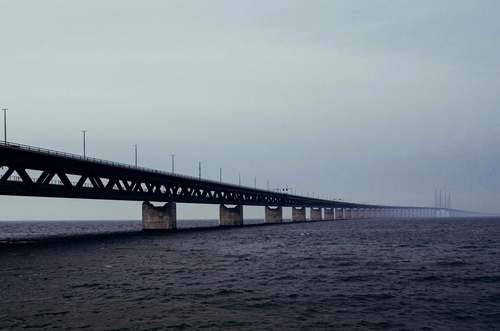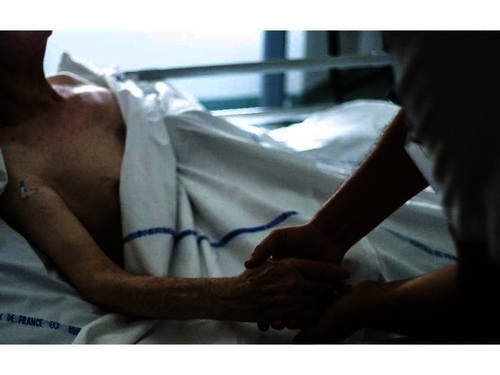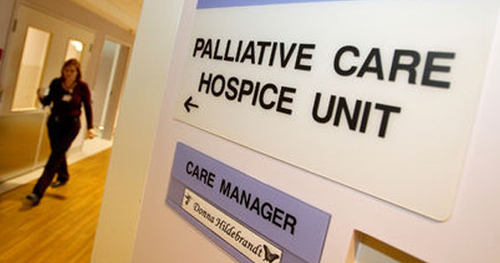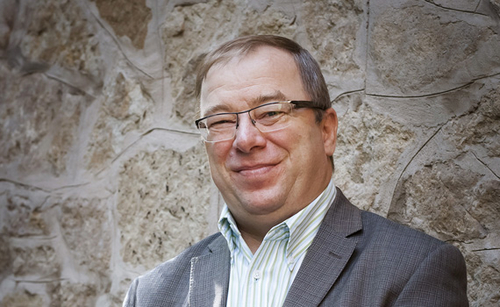The Federation of Canadian Municipalities will no doubt attract significant media interest at its upcoming annual conference with calls for great physical infrastructure spending. Indeed, even before it kicks off its gathering in Edmonton from June 5 to 8, the FCM has already won well-deserved attention for a report showing Canada is $123 billion behind on physical infrastructure, and lagging by a further $2 billion annually. New federal investments of $75 billion over 10 years for Canadian infrastructure will help, but even that can't catch us up completely. The FCM is right to raise concern about this chronic infrastructure shortfall, which generally captures our awareness only if a large chunk of a local bridge plunges into a river or a broken water main snarls commuter traffic. We need these things so that we can live the lives we do, yet we forget and neglect them until trouble reminds us they're essential. Yet there is another kind of essential infrastructure that all too often has even lower visibility: social infrastructure.Read the rest of Friesen's article at the Regina Leader-Post website.

Helping people make connections
May 25, 2015

Michael Van Pelt on <i>Cross Country Checkup</i>: Mediating institutions are essential
On Sunday's Cross Country Checkup, Cardus president Michael Van Pelt discussed the character of the social safety net and how stronger social architecture can improve Canada (from 1:16:29). I think the central question around the future challenge to our "safety net" as we call it is actually a structural challenge about how society is organized. Cardus, for the last ten years, has talked about renewing Canada's social architecture. And the root to that question really is our impulse over the last number of decades to default to fewer and fewer institutions to solve our problems. So on the one hand, if you're on the left, and you have a problem, who do you call? You call the state to solve your problem. On the other hand, if you're on the far right, you just leave it up to the individual or the market and just let it take care of itself. In the middle, what you have then, is many of these institutions—you may call them mediating institutions or civil society institutions—that are no longer as vibrant as they either historically were, or what they need to be to meet the needs of a flourishing society.The program also featured Sunil Johal of Renewing Canada's Social Architecture, a collaborative project involving researchers from the Mowat Centre, the Caledon Institute of Social Policy, the Institute for Competitiveness and Prosperity and the Institute for Research on Public Policy. You can listen to the entire program at the CBC website.
May 17, 2015

Wheels, Walking and the Absence of Wings
Normal preparation for a distant conference or work commitment includes booking your flights. But what if you didn’t do that: What if, instead of booking a flight, you booked a berth on a train. What would happen? I decided to find out. My rule was that travel to the Congress for the New Urbanism 23 conference in Dallas, Texas from my home in Hamilton, Ontario would involve only wheels and walking, no wings. That meant a cab from my house to the GO station, walking from the GO to the Megabus station, bus to Buffalo train station, then train to dowtown Dallas and a walk to my hotel. One of the themes that you’ll find in new urbanism circles is the idea of path as place. That means that sidewalks, roads, streets, and other means of getting around are not only lines that connect where we really need to be, they are themselves places where we socialize, shop, read, watch, listen, and live out our lives. My experiment was driven by a desire to learn: what kind of place is the Amtrak pathway? It is a very different pathway than an airplane. Every mode of travel is peculiar in the space that it creates and the way that feel in that space. I am not offering an apologetic for the superiority of train travel over flying. Or bicycling. Or being shot out of a cannon. Each has its charms and irritations. Read more at seekingcommunity.ca.
May 13, 2015

Milton Friesen talks about transit for Tamarack’s Seeking Community blog
Our director of Social Cities, Milton Friesen, decided last month that his trip to the Congress for the New Urbanism 23 conference in Dallas, Texas, from his home in Hamilton, Ontario, would involve only wheels and walking, no wings. One of the themes that you’ll find in new urbanism circles is the idea of path as place. That means that sidewalks, roads, streets, and other means of getting around are not only lines that connect where we really need to be, they are themselves places where we socialize, shop, read, watch, listen, and live out our lives. My experiment was driven by a desire to learn: what kind of place is the Amtrak pathway?In his blog entry for the Tamarack Institute's Seeking Community blog, Milton discusses some of the differences between flying and keeping one's feet on the ground.
May 13, 2015

Peter Stockland on <i>Cross Country Checkup</i>: ‘You don’t tell Albertans what to do’
Peter Stockland chatted with Rex Murphy about Alberta politics from "behind the croissant curtain" in Montreal on Sunday. The fumes that I could smell wafting across the Great Lakes and the Canadian shield from my beloved Alberta were the fumes of entitlement ... that you know, "You're gonna vote for us because you've always voted for us before." One thing I do know about Albertans from having lived there three times is you don't tell Albertans what to do, and you don't tell them that they owe you something. On the new premier's family legacy, which he also wrote about for the Cardus Daily: You can see it in Rachel Notley: There obviously a physical resemblance, but there's a resemblance of comportment as well, in that sort of fundamental ... sense of empathy, but it's also a deep sense of decency. It truly has passed on. And on whether Notley's victory came as a surprise: People think of Alberta as ... this right-wing bastien of all things republican and all the rest of it. It's not true. Alberta's much, much more of a communatarian province than most people realize ... its roots are deep in that ethos of doing for others so that they can do for you when the time comes. Listen to this interview on Cross Country Checkup at the CBC website (from 0:24:58).
May 10, 2015

Opinion: A continuum of care, before a natural death
In Canada’s fragile discussions around end-of-life care, three statistics lie submerged in the rhetorical tension, dissension and fear. The first two numbers are from a 2013 Harris Decima Survey and a 2011 report by the Canadian Institute for Health Information. They show, respectively, that 75 per cent of Canadians would prefer to die at home, and that 70 per cent of Canadians instead die in hospital. The third number is from a new Nanos Research poll commissioned by Cardus, which showed that 73 per cent of Canadians fear their end-of-life wishes will not be respected in whatever setting they pass their final days. A conclusion: Almost three-quarters of Canadians are not getting what they want from the care system set up to usher them over death’s threshold, and while living are denied peace of mind. This is no reflection on the skill and best intentions of those on the front lines or in the administrative roles of that system. Rather, as the Cardus report on re-framing the end of life conversation in Canada makes clear, it is a function of a system that has many overlapping, and frequently contrary, approaches and objectives. History is partly to blame. We are in a third “zig” of the zigzag that occurred during the 20th century. Through the 1930s, fewer than 30 per cent of Canadians died in hospital. By the 1950s, that had climbed to more than 50 per cent. A peak was reached in 1994 when 77 per cent of us breathed our last in a hospital bed. That was the apex of what can be called the medicalization of death. The end of life ceased to be a moment of passage, and became a test of medical perfectibility. Tools, technique and transfer of patients to ever more specialized hospital wards crowded out the family at the foot of the death bed at home. In part, economics and demographics made the move to medicalized death unsustainable. We are now living a return to older ways of saying last goodbyes. While the greying of the baby boomers, and the immense social cost of their boundless sense of entitlement, is a familiar story, something much more is behind the return to seeing death as a natural process. Modern medicine has provided us the means to mitigate much of the pain experienced at the end of life, and we can deliver it in homes and hospices as well as hospitals. Our challenge is that most health-care programs exist as stand-alone offerings rather than as a seamless continuum of care. Those confronting end-of-life issues require not only medical support from the health-care system, but emotional and spiritual support as well, including for caregivers. It’s critical to this continuum that caregivers be placed at the centre. Policy must be designed around their needs. That, in turn, requires a renewed understanding of natural death as a good and proper end of life dependent on the whole of our social architecture: family, local institutions, community in it fullest sense. Fittingly, hope for a successful transformation of our approach to death comes from what happened with life’s other inevitability: taxes. Starting in the mid-20th century, successive Canadian governments made incremental changes to the tax system to give Canadians greater control over their retirement savings. Such tools as public pensions and RRSPs became a common means to prepare for the future. They became a natural part of the continuum of conversation in Canada about life after work. Today, it’s time for a similar change in health care so Canadians have the power to plan early to ensure supports are in place to die a natural death.
May 7, 2015

We’re sick of ‘broken’ health care
April 29, 2015

End-of-Life Care Failing Canadians
April 29, 2015

Ray Pennings on End-of-Life Poll
April 28, 2015
